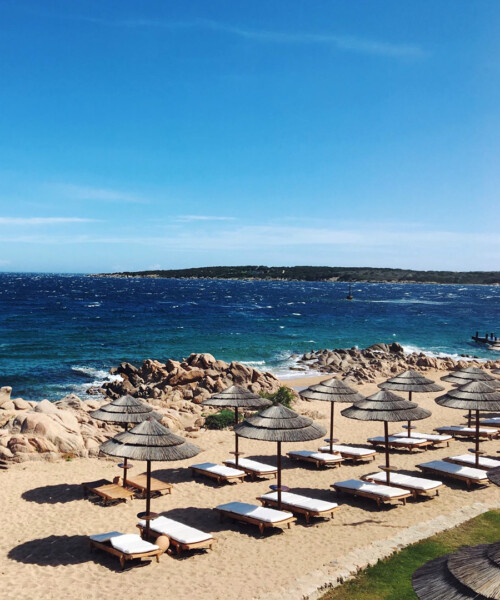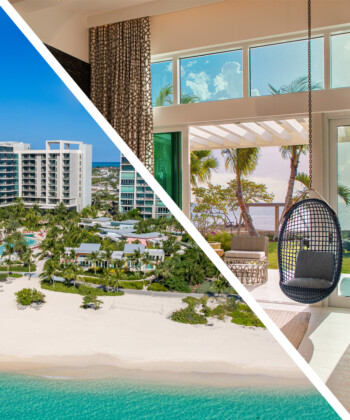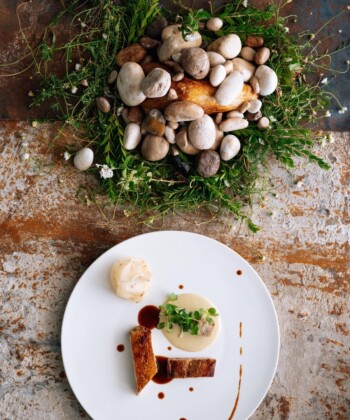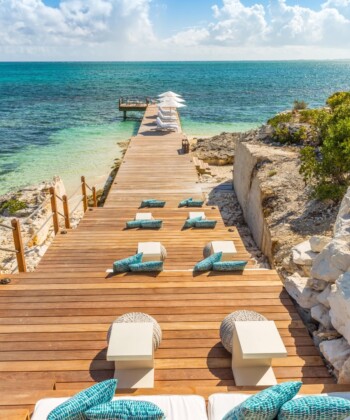Sardinia is nothing if not multifaceted. Expensive resorts are flanked by prehistoric ruins, perfect white-sand beaches sit beneath dazzling granite cliffs, and the bustling and cosmopolitan capital of Cagliari sits not too far from medieval churches and villages in which the native Sardo language is still spoken. It’s an island that’s unlike any other in the world, a wonderfully mysterious playground for even the most experienced traveler. Herein, the seven reasons you need to visit this limestone Mediterranean gem.
Archeological Sites
Dating back milennia, the stunning ruins in the Costa Smeralda region have led to speculation that Sardinia was home to the lost city of Atlantis. The Arzachena ruins, as they’re called – 7,000 towers, burial grounds and collections of prehistoric artifacts – offer an unparalleled glimpse into prehistoric life. One of the most mysterious and famous of the ruins is Su Nuraxi di Barumini, a complex strcuture connected by a warren of underground passages from 16th century BC that proves just how complex this early society was; one storage cavity inside keeps food at a constant temperature of about 53 degrees farenheit.
Pristine Beaches
Sardinia, with its trademark snow-white sand and turquoise water, Sardinia is well known for having some of the best beaches in Italy, from Aruttas beach on the Sinis Peninsula to Spiaggia dis Piscinas, which sits on the Green Coast (or Costa Verde). For a taste of mid-century glitz and glamour, head to Spiaggia del Principe on Costa Smeralda, a beach commnuity that was developed in the 1960s to be a playground for the rich and famous by Prince Karim Aga Khan, head of the world’s 15 million Ismaili Muslims (more on that below). This crescent shaped beach wraps around a translucent blue-green colored bay and is decorated by limestone cliffs.

Cagliari
You can’t get more Italian than Cagliari, the capital of Sardinia boasting the liveliness of Rome with the peaceful views of Venice. Like other bustline cities, you’ll find the requisite buzz of Vespas speeding down small streets, locals mingling over espressos in the neighboring cafes and ancient Roman ruins around nearly every corner. The Castello, the medieval walled quarter perched high above town, and Poetto beach, home to dozens of flamingos, are must-see photo ops. Via Roma or Via Giuseppe Manno for a blend of affordable and high-end shops and to eat, go to Via Sardegna where you’ll find local bites that hit every budget (although you can’t beat the 4 euro bottle of wine at Trattoria Lillicu).

The Pasta
Pasta in Itality is hardly a rarity, but you’ll only find su filindeu, known as the world’s rarest pasta, in Sardinia. Only three women – all members of the Abraini family – know how the recipe, which has been passed down for nearly 300 years. The ingredients are simple enough – just dough, water and salt – but the execution is what makes it so difficult. The dough is cut into 250 strands and then dried meticulously in woven sheets. The precious pasta available to the public just twice a year at the Feast of San Francesco, which happens in May and October. As an alternative, try malloreddus a.k.a. gnochetti Sardi (little Sardinian Gnocchi), another Sardinia-specific variety. The pasta itself resembles gnocchi, but is made entirely from semolina flour and water and is often served with pork and beef sausage bolognese or with mussels.

Adventurous Hikes
The island may be known most for their beaches, but the National Parks and rugged hiking and horseback riding trails offer an entirely different way to soak up the natural landscape. One of the most beautiful hikes is the one in Gola Su Gorropu – nicknamed the “Grand Canyon of Sardinia.” This 10.5-kilometer trail leads you along canyons, a dramatic gorge and staggering 400-meter walls of limestone. True hiking junkies can opt for the seven day, 27-mile hike along the Selvaggio Blu trail. This challenging trajectory, usually broken up into four six-to-nine-hour stages, includes unparalleled views of both cliffs and oceans.
Puerto Cuervo
Sardinia has long been Europe’s playground, and no place better showcases that than the enclave of Puerto Cuervo. Constructed in the 1960s by Prince Karim Aga Khan, this secluded cluster offers peak Mediterranean glamour. Channel your inner James Bond at any of the area’s five-star hotels — Hotel Cala di Volpe, Hotel Romazzino and Hotel Pitrizza – which offer easy access to shopping in the downtown marina and sunbathign on the pristine beaches of Cala di Volpe. But for true high-rollers, the $36,000-per-night presidential suites at Yacht Club Costa Smeralda, founded by the Aga Khan in 1967, are the only way to rest your head.

Natural Springs & Caves
Thanks to its complex geology, the island is packed with hidden gaves and picture-perfect swimming holes. Grotte del Blue Marino is a 5-kilometer stretch of water with an incredible ceiling of stalagmites and Neolithic wall carvings. The most famous cave is Grotta di Neptune, home to a large lake and impressive collection of pillar-like formations. Then there’s Rio Pitrisconi, a wild stream and ravine in the northeast that doubles as a nature-made infinity pool. For a truly stunning view, you can swim to the edge of the ravine and look out over a thundering waterfall. In the sun, the sparkling granite cliffs alternate betewen shades of pink and orange and yellow – mimicking a sunset.






































